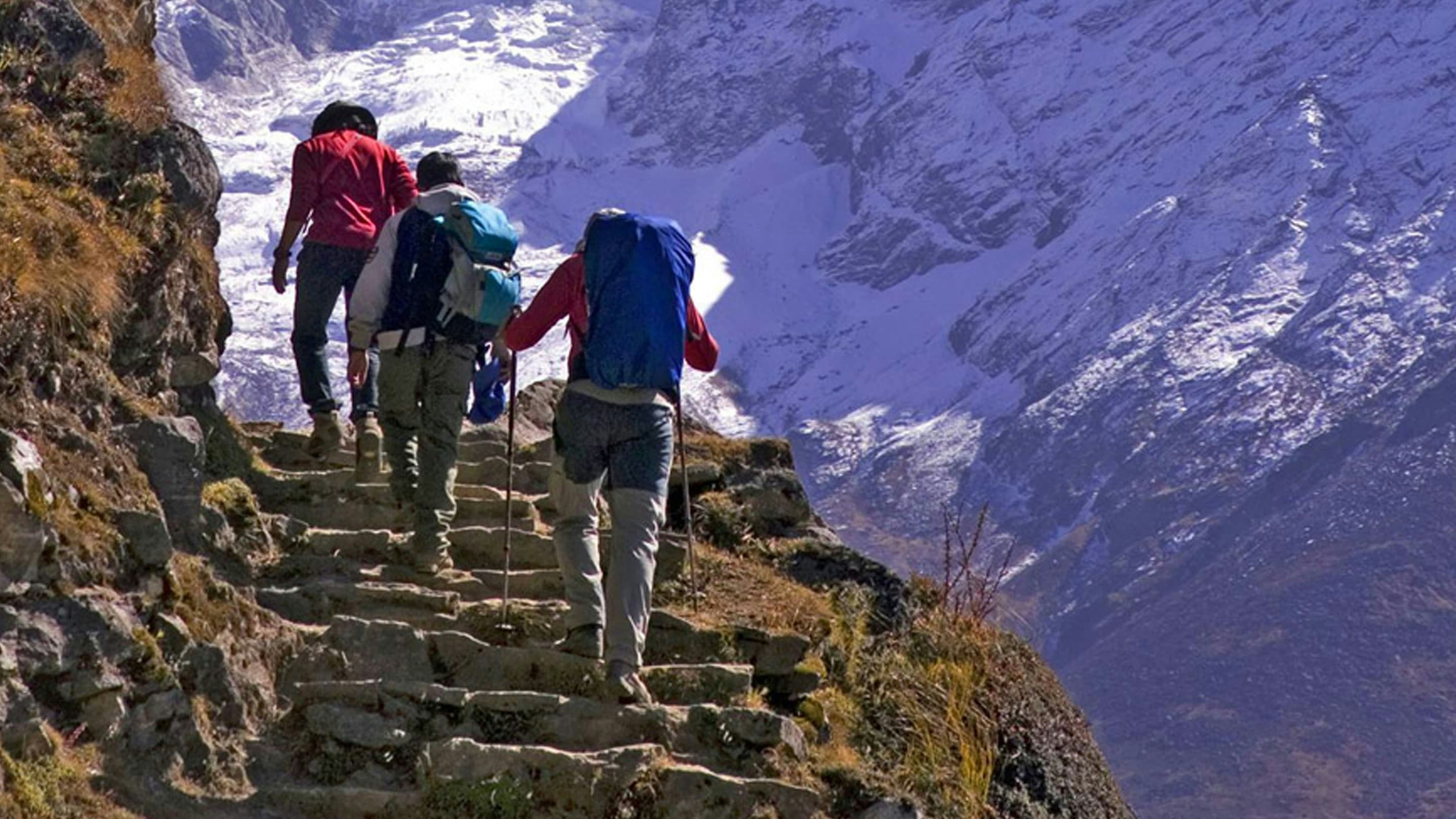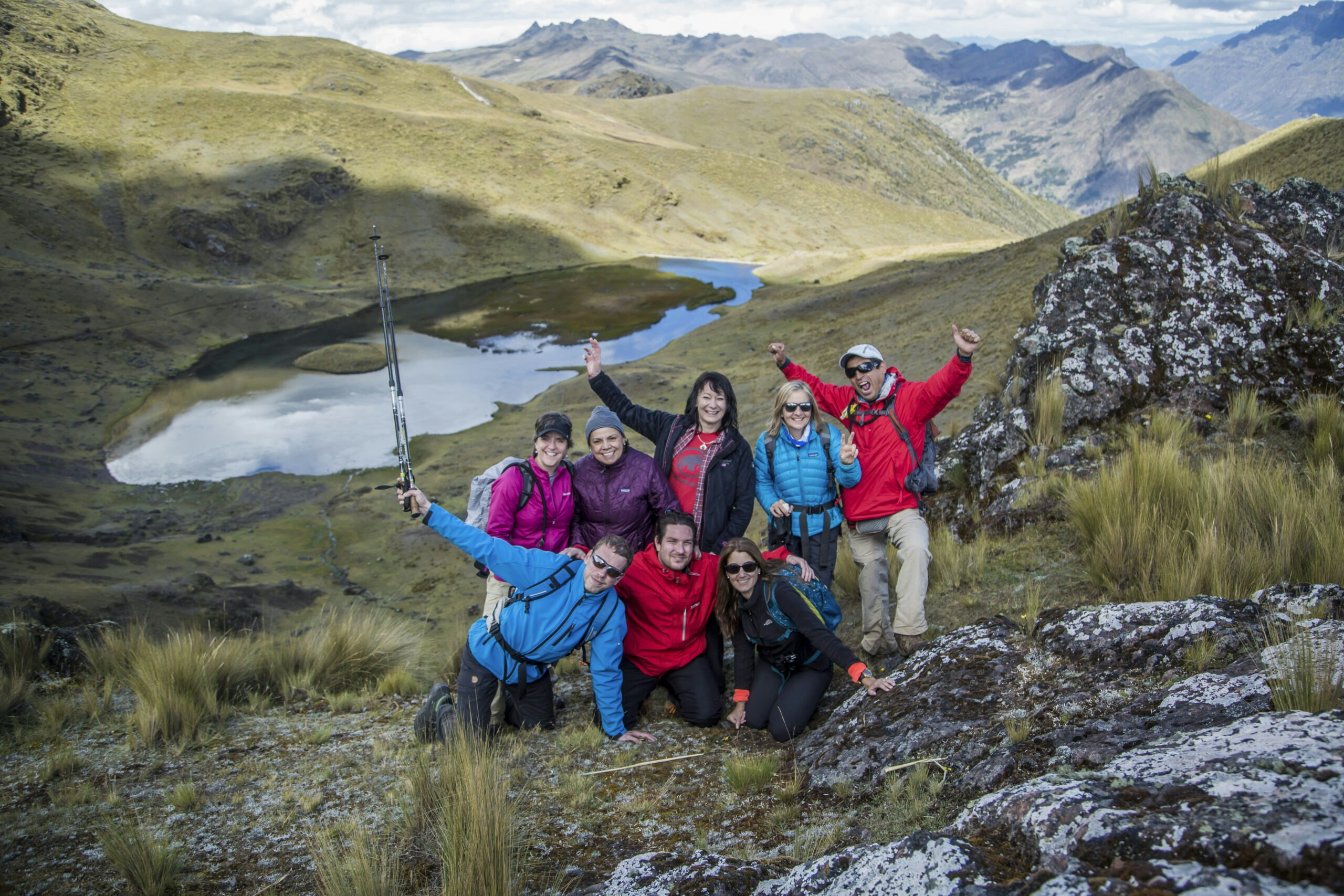Building Strength for Your Next Adventure Tour

Hiking is a great form of exercise that requires not only cardiovascular endurance, but also muscular strength and endurance!
If you’re looking to improve your hiking ability, I’ve got some tips to share! In this article, I will provide tips on how to improve your strength-endurance training to boost your legs, core, and overall ability for your next hiking tour.

Overview
What sort of strength training would help my legs and core for a hiking tour?
An important nuance of fitness, called strength-endurance, is the ability to maintain strength without deterioration of energy over a period of time, as in the case of walking mile 5 as well as mile 1. One way to improve strength-endurance is to climb stairs or carry heavy packs on hikes.
Muscular strength is also important for hiking, and can be improved with weight-bearing exercises using free-weights or adjustable cable machines. When selecting exercises, it’s important to target the muscles around your ankle, hip, and knee joints. Prioritize exercises that require balance, which machines cannot help out with.
I recommend lunges, alternating reverse lunges, walking lunges, and reverse lunge with an elevated foot (calf raise). Lunges for example, present the risk of tipping sideward and stumbling, which is evidence that they should be incorporated into a competent hiking and trekking program.

Here are some of my recommended strength-training exercises:
Alternating reverse lunges
Walking lunges
Reverse Lunge – Elevated Foot (Calf Raise)
More Tips
- To enhance the outcome of the aforementioned strength exercises, perform with a backpack to stimulate a higher demand for core stability. Be sure to secure the hip belt and sternum strap to keep pack close to the torso for safety reasons.
- Consider adding a soft foam mat under your feet to increase the balance demands, and
- Lunge on a trail with uneven surfaces to further challenge core stability and balance.
Core training is usually thought of as performing sit-ups and crunches to generate that awesome burn. This is no longer conventional wisdom in the professional training industry. This will not provide the proper core strengthening as it pertains to hiking and trekking. It is better stated in this way: Core strength, or rather ‘core stability,’ helps ensure that your torso—particularly your lumbar (lower) spine—is protected while walking on uneven terrain. That means that the muscles around the spine are able ‘resist’ harmful movements from stumbles and repetitive walking. Additionally the muscles in the core area are able to tolerate lifting and carrying loads like pack weight or lifting a heavy obstacle out of the way.
It should also be noted that there is lot of disagreement in the exercise science community as to what the ‘core’ is defined as. To many the core extends above the waist and down into the lower body.
How can I improve my cardiovascular fitness for my hiking tour?
Cardiovascular fitness is a specific component of training and should not be confused with endurance. Cardiovascular fitness is just one of the means by which you fuel your ability to get from point A to point B. Endurance is the ability to endure all activities in the itinerary, or to endure multiple repetitions of a task like thousands of steps along the trail.
Cardiovascular fitness can be improved by incorporating high intensity interval training (HIIT) into your weekly regimen. HIIT is more efficient than any other method because it requires less training time. In other words you can train at a moderate intensity for a long duration or a high intensity for a short duration to get the same results. There are many well researched protocols that are very effective. Published below is a modified version that will produce great results.

Ask an Expert
We want you to have the best adventure, so don’t hesitate to call our expert team of adventure specialists at 800-974-0300 to learn more. Or click the button to use our online contact form.
Activity: High Intensity Interval (HIT) Training
- Warm-up for 10 minutes. Make sure you gradually work your way up to a thorough sweat by minute 10; that’s a good indication you are ready for high intensity training.
- Perform 10 intervals alternating between intense work and complete rest.
Work-Interval: Perform the work-interval at the highest intensity you can withstand. Discomfort in the muscles accompanied by high respirations are to be expected.
- Rest-Interval: Perform the activity at the lowest intensity setting or get off the machine and walk around to allow for as much recovery as possible. Use the stopwatch function on your phone to track your rest interval. If you are on a machine, the console will display time.
- Pick a weight-bearing activity like elliptical, stepper or running. If your knee and hip joints or feet need a break for recovery then perform the intervals on a bike.
Recommended HIT Workout Routine:
- Interval 1 – Work :60 rest 1:00
- Interval 2 – Work :60 rest 1:00
- Interval 3 – Work :60 rest 1:15
- Interval 4 – Work :60 rest 1:15
- Interval 5 – Work :60
- Rest for 3 minutes. Discontinue exercise to allow the most recovery possible.
- Interval 6 – Work :60 rest 1:00
- Interval 7 – Work :60 rest 1:00
- Interval 8 – Work :60 rest 1:15
- Interval 9 – Work :60 rest 1:15
- Interval 10 – Work :60
- End your HIIT with very light intensity either on the machine or preferably just walk around the gym or outside.
Note: If your adventure requires many hours of multi-day hikes you still have to put in several miles hiking every weekend to condition your muscle, connective tissue, bones etc. to handle the rigor of long duration on the trails.
For more expert tips from Marcus, check out his blogs on How to Organize Your Training Schedule and Balancing Body & Mind.
About Marcus Shapiro & Fit For Trips

Marcus Shapiro has been crafting adventure travel fitness programs since 2009. His #1 goal: ensure you arrive at your destination physically fit and mentally ready to enjoy every activity—both planned and unexpected—in your itinerary. With over 20 years in the fitness industry, Marcus combines a deep understanding of exercise science and real-world experience with a whole lot of empathy to ensure every traveler is successful and every adventure is awesome. Check out Fit for Trips online at fitfortrips.com!

Legal Disclaimer: The tips and suggestions made by Marcus Shapiro are his alone and are not made by Mountain Travel Sobek. Please consult with your physician before undertaking any new fitness regime.